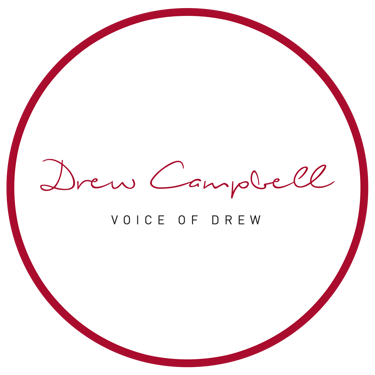
Carlisle Train Station in 2050
Unreal Engine Walkthrough
VIRTUAL STAGECRAFT
Drew Campbell
5/13/202510 min read
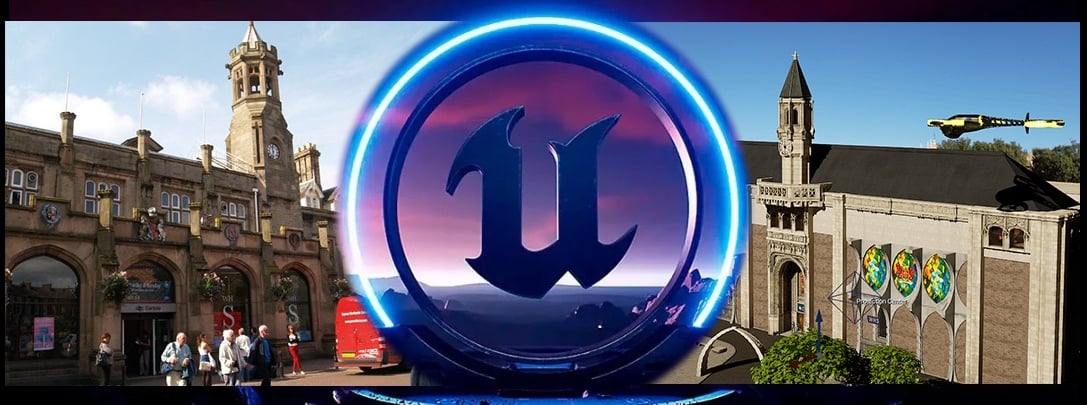

Carlisle Train Station in 2025
Big learning curve
I love a challenge…
…and diving into Unreal Engine has been no exception. The creation of virtual worlds has always fascinated me—the intricate balance of art, logic, and technical execution required to bring immersive environments to life. For years, Unreal Engine remained an intriguing concept, something I admired from a distance but never actively pursued beyond curiosity. That changed with this project.
Despite its intuitive interface, Unreal Engine is a powerhouse of complexity. From mastering Blueprints to optimizing assets, every step has been a learning curve. The sheer depth of tools, from material creation to lighting and performance optimisation, revealed how much more there is to explore. Even now, I feel as though I’ve only scratched the surface, unraveling layers of knowledge with each challenge I tackle.
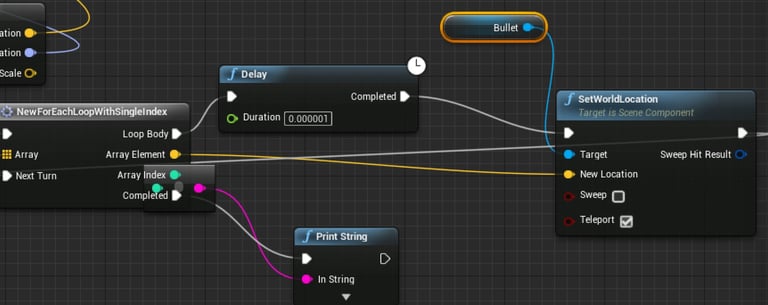

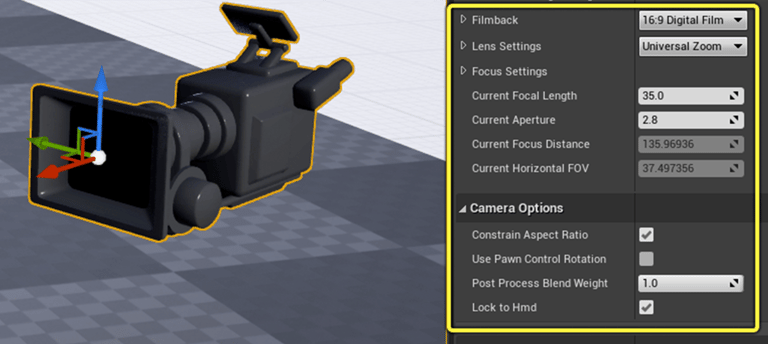

Planning Process
Image boards, references and 3D assets
PureRef
I compiled a collection of futuristic railway station concepts into a PureRefdocument, organizing diverse architectural styles and structures for inspiration. Some references were wildly ambitious, pushing the boundaries of practicality. To expand my creative vision, I also generated AI-assisted imagery, using prompts to explore unconventional designs and unique spatial layouts.
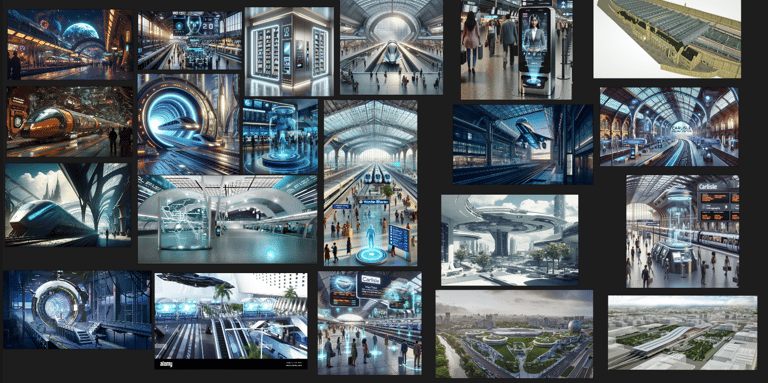

Collecting 3D Assets
I began searching for 3D assets, including trains, vehicles, people, and architectural elements, to bring my project to life. My tutor, Hanner, warned me that this process could be time-consuming, and she was right—it required patience and careful selection to find assets that matched my vision. Fortunately, Lucian introduced us to a method for importing assets from other projects, which proved invaluable in streamlining the workflow.
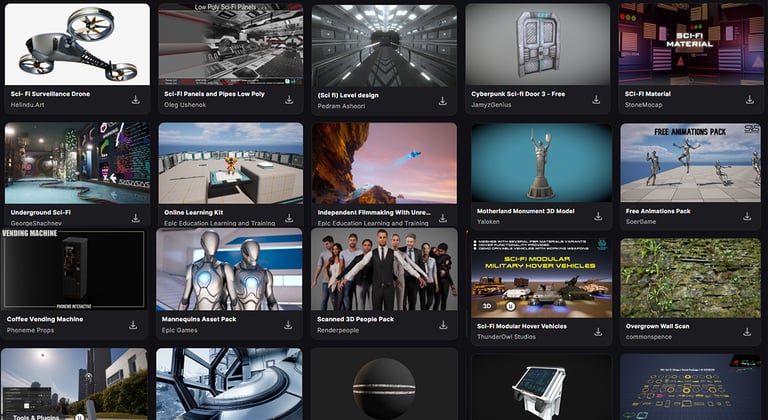

Experimentation
Sourcing and creating assets
Gathering and refining assets
I quickly found myself inundated with assets—it’s all too easy to fall down the rabbit hole of digital asset libraries. Most of my resources came from Fab, but I also sourced models from TurboSquid, Sketchfab, and other platforms. I downloaded projects like KB3D NeoCities to expand my toolkit further, importing select building elements that complemented my vision. The bulk of the main structures came from a free building pack, which proved invaluable for my workflow.
While most elements fell into place, I had to custom-build certain details. The front building's roof, for instance, was entirely modelled in Blender after I couldn’t find a suitable asset. My goal was to merge modern concrete architecture with traditional ornate designs, but getting to this stage wasn’t easy. For weeks, I felt stuck, uncertain about translating my ideas into tangible structures. My ADHD made it difficult to process the intricate steps of the building process, but since starting new medication, I’ve gained much-needed clarity and direction.
Despite this progress, I still encountered limitations. I couldn’t find a suitable glass roof asset, and my attempts to build one in Blender fell short. This remains an area for improvement—something I aim to refine as I continue developing my skills.
The Station
Elements that shaped my project


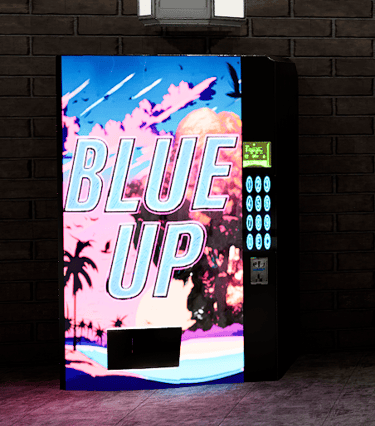

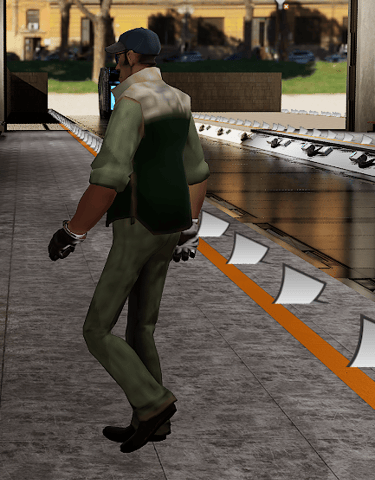

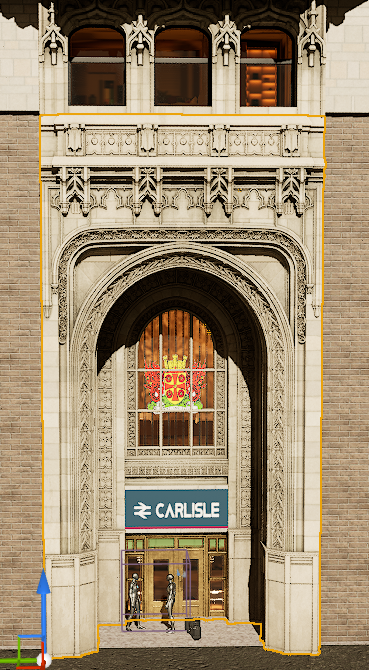

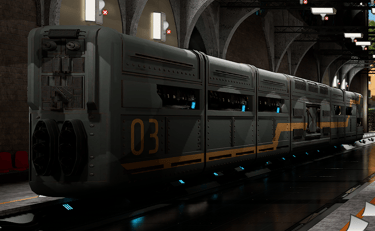

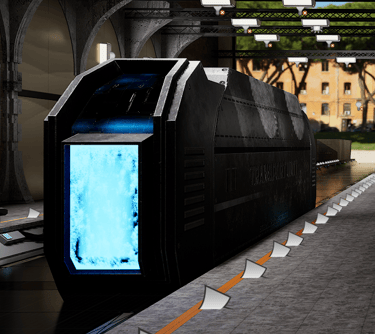

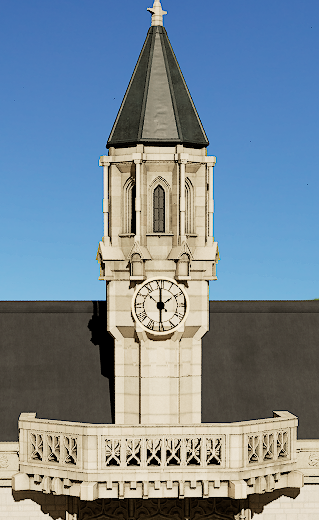

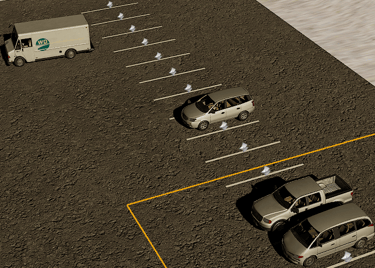

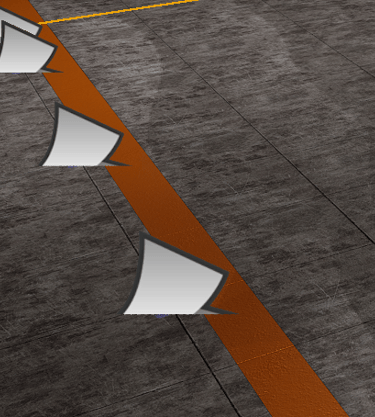

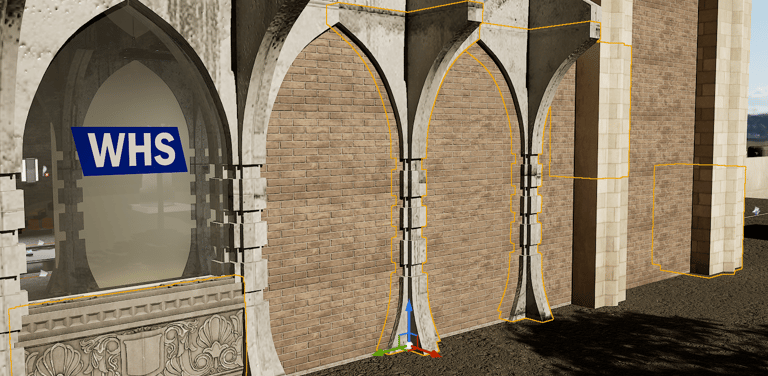



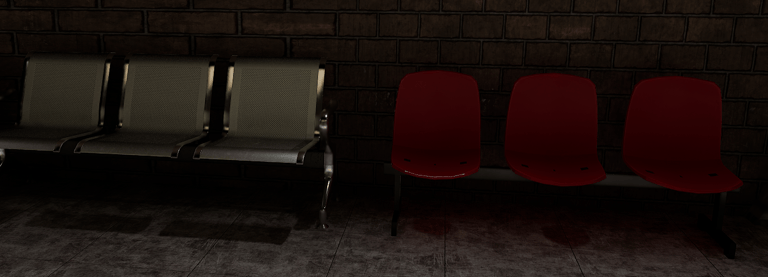

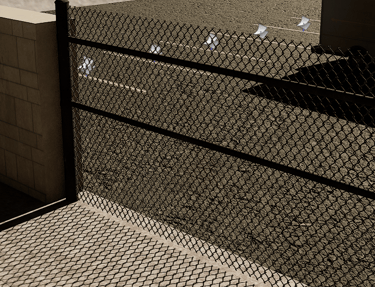

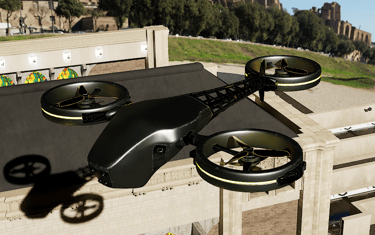

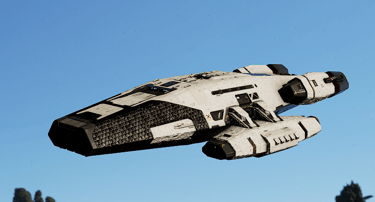

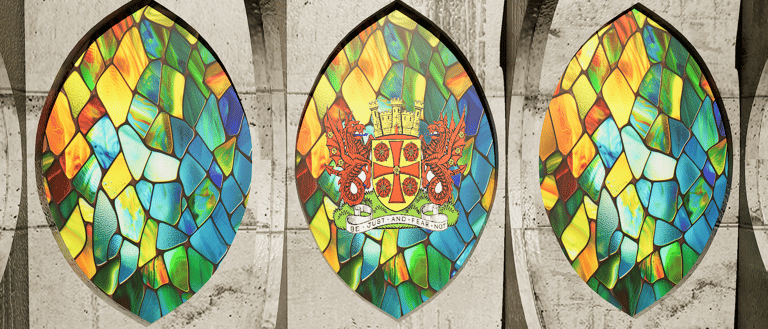

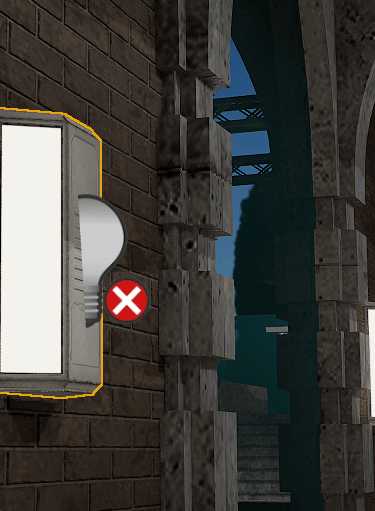

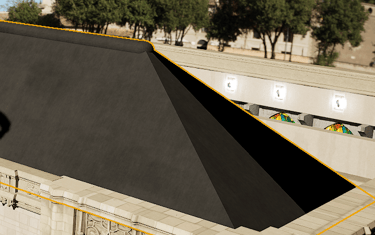

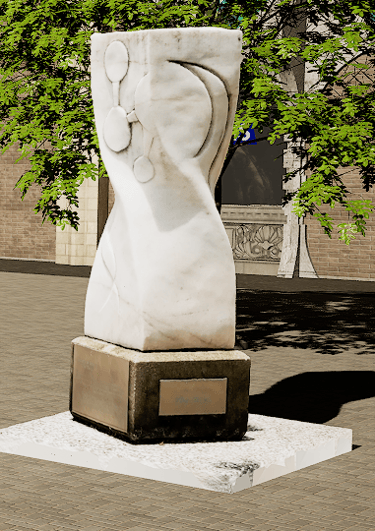

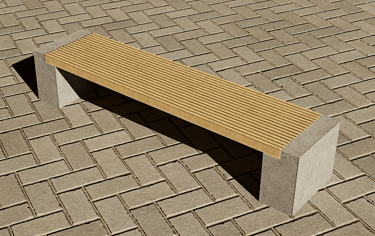

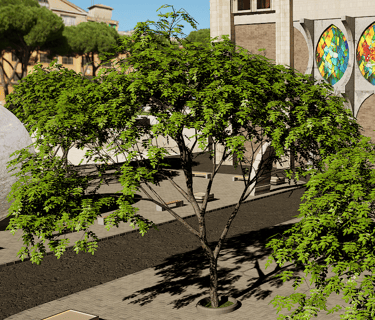

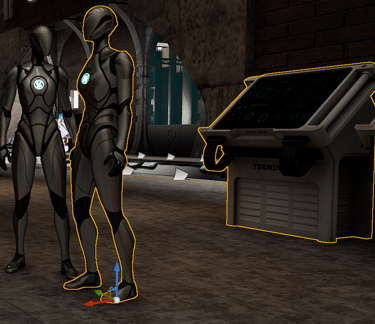

Walkthrough
Rendering and editing in Devinci Resolve
Software used: Unreal 5 Render, and DeVinci Resolve
Before completing the final render in Unreal Engine, I animated several elements within the scene, including moving trains, a vehicle parking sequence, a spaceship landing on a platform, and the platform lowering at the end. Additionally, I included a walking character, while the robot figures were pre-animated. The walkthrough utilised three different cameras, each of which I animated to enhance the narrative flow and visual dynamics.
For the final edit, I chose to use DaVinci Resolve over After Effects, based on personal preference. Within DaVinci Resolve, I performed colour correction and incorporated a music track, which I edited and synchronised using the Fairlight audio tools.
Overall, I’m quite satisfied with the outcome. However, there are still some rendering artefacts within Unreal Engine that I was unable to resolve.
Final Thoughts
Navigating Setbacks: Mixed Emotions and Health Struggles
The beginning of this module, Virtual Stagecraft, was filled with mixed emotions. Initially, I was excited to get started, but as soon as the work began, anxiety crept in. I’ve always enjoyed Lucian’s classes—having known him for a few years, I can confidently say he’s an excellent tutor. But despite that, I struggled to keep up. My mind constantly felt muddled, and I found myself playing catch-up in lessons—not just in this module, but in all of them.
I tend to get lost in the small details, which often slows my progress. This challenge was compounded by unexpected health complications. A sudden, excruciating gallbladder issue sent me to the hospital in an ambulance, and within two days, I was in emergency surgery to remove my gangrenous gallbladder. On top of that, I contracted sepsis. It was a terrifying experience, and while I felt incredibly lucky to be alive, my recovery stalled everything.
As I write this, I haven't attended university for over a month. Only in the past two weeks have I found the motivation and mental energy to return to this project. Surprisingly, during that time, my build progressed more quickly than in previous months. Inspiration struck, and I began moving forward—albeit slowly.
I know I’ll never be 100% satisfied with my work; perfectionism makes that impossible. But despite the setbacks, I’m proud of myself for completing this project—even if it’s slightly beyond the deadline.


Carlisle Train Station in 2025
Big learning curve
I love a challenge…
…and diving into Unreal Engine has been no exception. The creation of virtual worlds has always fascinated me—the intricate balance of art, logic, and technical execution required to bring immersive environments to life. For years, Unreal Engine remained an intriguing concept, something I admired from a distance but never actively pursued beyond curiosity. That changed with this project.
Despite its intuitive interface, Unreal Engine is a powerhouse of complexity. From mastering Blueprints to optimizing assets, every step has been a learning curve. The sheer depth of tools, from material creation to lighting and performance optimisation, revealed how much more there is to explore. Even now, I feel as though I’ve only scratched the surface, unraveling layers of knowledge with each challenge I tackle.




Planning Process
Image boards, references and 3D assets
PureRef
I compiled a collection of futuristic railway station concepts into a PureRefdocument, organizing diverse architectural styles and structures for inspiration. Some references were wildly ambitious, pushing the boundaries of practicality. To expand my creative vision, I also generated AI-assisted imagery, using prompts to explore unconventional designs and unique spatial layouts.


Collecting 3D Assets
I began searching for 3D assets, including trains, vehicles, people, and architectural elements, to bring my project to life. My tutor, Hanner, warned me that this process could be time-consuming, and she was right—it required patience and careful selection to find assets that matched my vision. Fortunately, Lucian introduced us to a method for importing assets from other projects, which proved invaluable in streamlining the workflow.


Experimentation
Sourcing and creating assets
Gathering and refining assets
I quickly found myself inundated with assets—it’s all too easy to fall down the rabbit hole of digital asset libraries. Most of my resources came from Fab, but I also sourced models from TurboSquid, Sketchfab, and other platforms. I downloaded projects like KB3D NeoCities to expand my toolkit further, importing select building elements that complemented my vision. The bulk of the main structures came from a free building pack, which proved invaluable for my workflow.
While most elements fell into place, I had to custom-build certain details. The front building's roof, for instance, was entirely modelled in Blender after I couldn’t find a suitable asset. My goal was to merge modern concrete architecture with traditional ornate designs, but getting to this stage wasn’t easy. For weeks, I felt stuck, uncertain about translating my ideas into tangible structures. My ADHD made it difficult to process the intricate steps of the building process, but since starting new medication, I’ve gained much-needed clarity and direction.
Despite this progress, I still encountered limitations. I couldn’t find a suitable glass roof asset, and my attempts to build one in Blender fell short. This remains an area for improvement—something I aim to refine as I continue developing my skills.
The Station
Elements that shaped my project












































Walkthrough
Rendering and editing in Devinci Resolve
Software used: Unreal 5 Render, and DeVinci Resolve
Before completing the final render in Unreal Engine, I animated several elements within the scene, including moving trains, a vehicle parking sequence, a spaceship landing on a platform, and the platform lowering at the end. Additionally, I included a walking character, while the robot figures were pre-animated. The walkthrough utilised three different cameras, each of which I animated to enhance the narrative flow and visual dynamics.
For the final edit, I chose to use DaVinci Resolve over After Effects, based on personal preference. Within DaVinci Resolve, I performed colour correction and incorporated a music track, which I edited and synchronised using the Fairlight audio tools.
Overall, I’m quite satisfied with the outcome. However, there are still some rendering artefacts within Unreal Engine that I was unable to resolve.
Final Thoughts
Navigating Setbacks: Mixed Emotions and Health Struggles
The beginning of this module, Virtual Stagecraft, was filled with mixed emotions. Initially, I was excited to get started, but as soon as the work began, anxiety crept in. I’ve always enjoyed Lucian’s classes—having known him for a few years, I can confidently say he’s an excellent tutor. But despite that, I struggled to keep up. My mind constantly felt muddled, and I found myself playing catch-up in lessons—not just in this module, but in all of them.
I tend to get lost in the small details, which often slows my progress. This challenge was compounded by unexpected health complications. A sudden, excruciating gallbladder issue sent me to the hospital in an ambulance, and within two days, I was in emergency surgery to remove my gangrenous gallbladder. On top of that, I contracted sepsis. It was a terrifying experience, and while I felt incredibly lucky to be alive, my recovery stalled everything.
As I write this, I haven't attended university for over a month. Only in the past two weeks have I found the motivation and mental energy to return to this project. Surprisingly, during that time, my build progressed more quickly than in previous months. Inspiration struck, and I began moving forward—albeit slowly.
I know I’ll never be 100% satisfied with my work; perfectionism makes that impossible. But despite the setbacks, I’m proud of myself for completing this project—even if it’s slightly beyond the deadline.
Business address: Voice of Drew, Carlisle, CA2 6ER | UTR: 7259771174 Copyright Drew Campbell 2024
